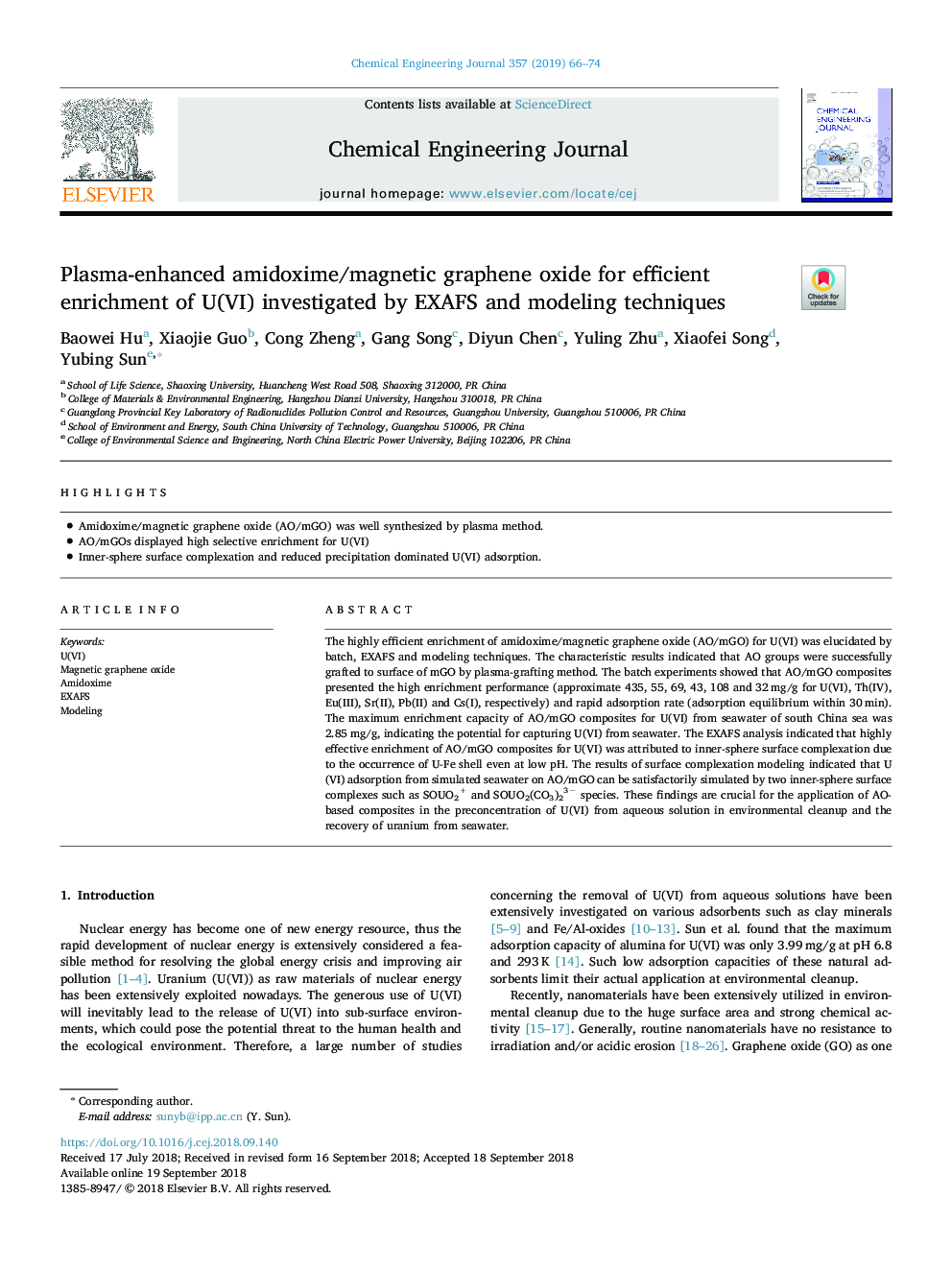| Article ID | Journal | Published Year | Pages | File Type |
|---|---|---|---|---|
| 10225112 | Chemical Engineering Journal | 2019 | 9 Pages |
Abstract
The highly efficient enrichment of amidoxime/magnetic graphene oxide (AO/mGO) for U(VI) was elucidated by batch, EXAFS and modeling techniques. The characteristic results indicated that AO groups were successfully grafted to surface of mGO by plasma-grafting method. The batch experiments showed that AO/mGO composites presented the high enrichment performance (approximate 435, 55, 69, 43, 108 and 32â¯mg/g for U(VI), Th(IV), Eu(III), Sr(II), Pb(II) and Cs(I), respectively) and rapid adsorption rate (adsorption equilibrium within 30â¯min). The maximum enrichment capacity of AO/mGO composites for U(VI) from seawater of south China sea was 2.85â¯mg/g, indicating the potential for capturing U(VI) from seawater. The EXAFS analysis indicated that highly effective enrichment of AO/mGO composites for U(VI) was attributed to inner-sphere surface complexation due to the occurrence of U-Fe shell even at low pH. The results of surface complexation modeling indicated that U(VI) adsorption from simulated seawater on AO/mGO can be satisfactorily simulated by two inner-sphere surface complexes such as SOUO2+ and SOUO2(CO3)23â species. These findings are crucial for the application of AO-based composites in the preconcentration of U(VI) from aqueous solution in environmental cleanup and the recovery of uranium from seawater.
Related Topics
Physical Sciences and Engineering
Chemical Engineering
Chemical Engineering (General)
Authors
Baowei Hu, Xiaojie Guo, Cong Zheng, Gang Song, Diyun Chen, Yuling Zhu, Xiaofei Song, Yubing Sun,
